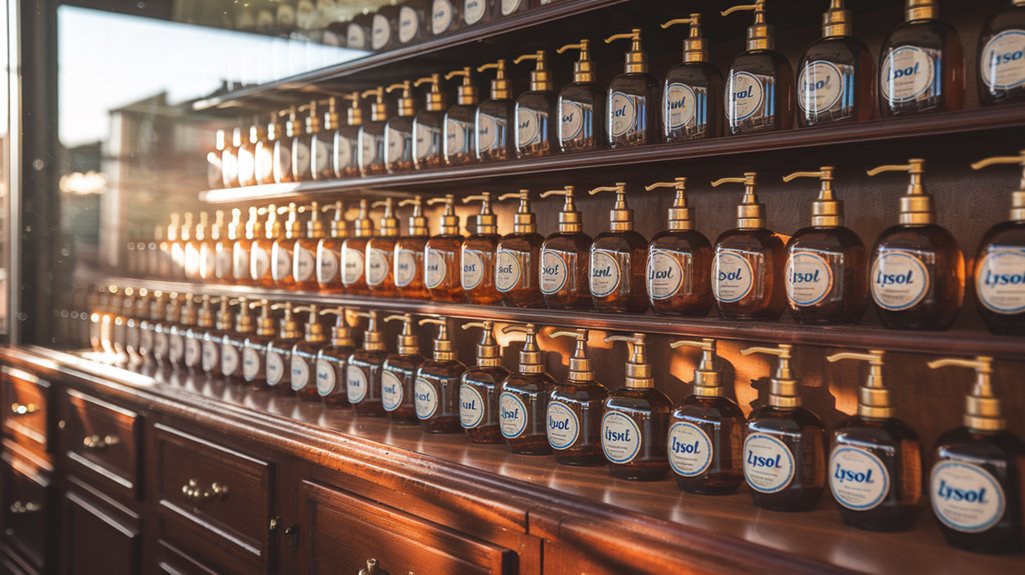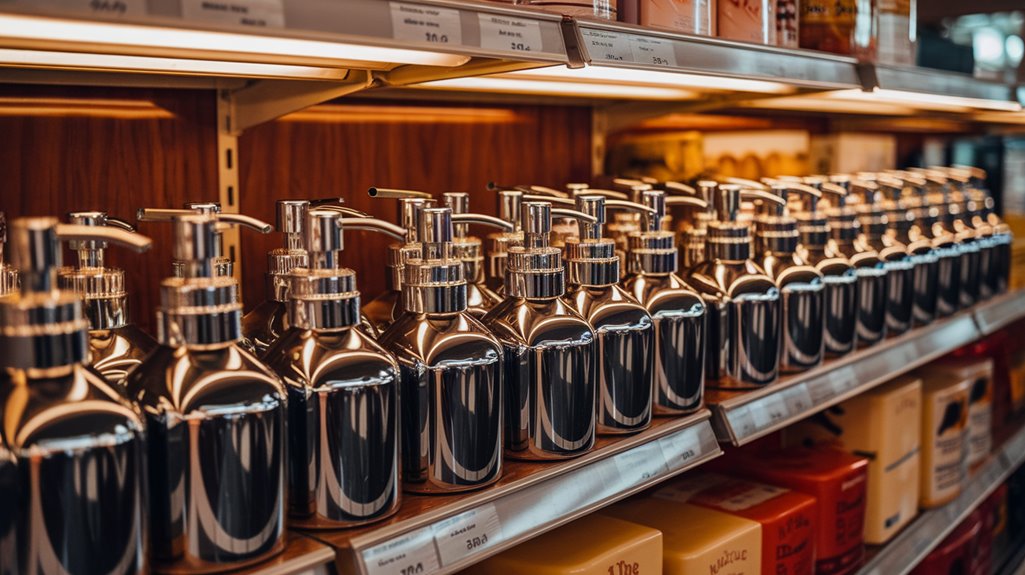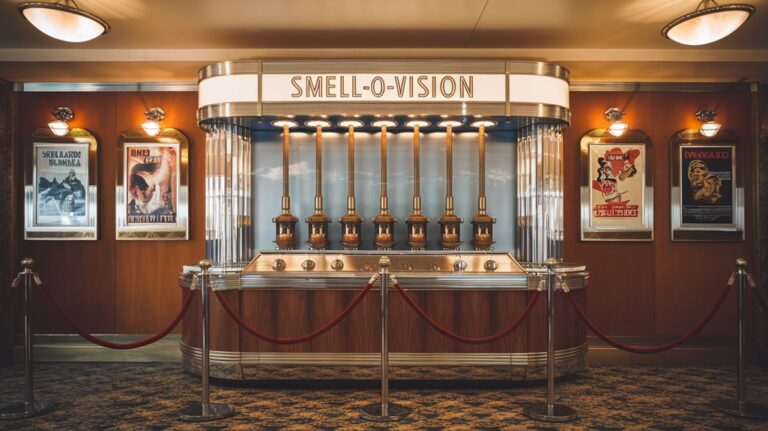He Bought Every Pump: The Clever Liquid Soap Monopoly
Picture yourself staring at a bottle of liquid soap by your sink – a convenience you've likely taken for granted. Yet in 1978, this everyday item emerged from one of the boldest business moves in consumer product history. You'll find that Robert Taylor's story isn't just about soap; it's about seeing an opportunity and securing it with unprecedented strategy. His decision to corner the market on plastic pumps didn't just launch Softsoap – it changed how you'll think about business innovation forever.
The Birth of SoftSoap and Taylor's Vision
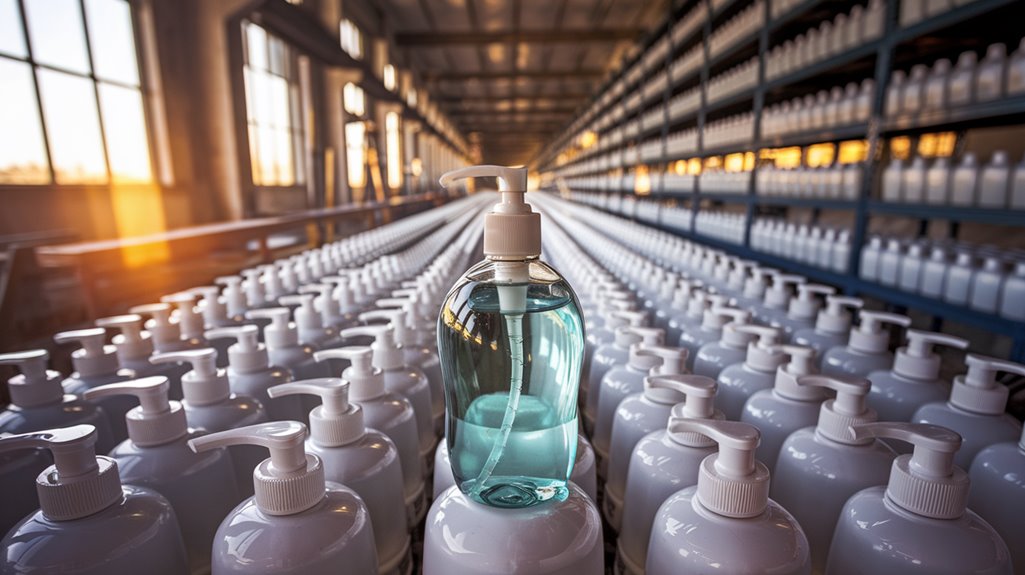
While liquid soap existed as early as 1865, it wasn't until Robert R. Taylor noticed something everyone else had missed: homes still didn't have a convenient liquid hand soap.
You'd find liquid soap in hospitals and public spaces, but bars of soap dominated household bathrooms. Taylor's vision went beyond just creating another cleaning product – he saw an opportunity to revolutionize how you'd wash your hands at home.
Through his company, Minnetonka Corporation, Taylor introduced Softsoap in 1980 with a game-changing pump bottle design. The brand became instantly recognizable for its aquarium-themed dispensers that brought style to bathroom sinks.
He launched with a massive 7 million dollar advertising campaign to establish the brand. He understood that success meant more than just the product itself; it required innovative packaging and strategic marketing.
His instincts proved right when Softsoap generated $25 million in sales within just six months, doubling the company's revenue and transforming the home soap market forever.
The Pump Supply Strategy That Changed Everything
When Robert Taylor sought to protect his revolutionary liquid soap concept, he devised one of the most brilliant defensive strategies in business history. He bought up the world's entire supply of plastic pumps, creating an impenetrable supply chain bottleneck that kept industry giants at bay for nearly a year.
You might wonder how this simple move proved so effective. By controlling pump manufacturing, Minnetonka gained a vital competitive advantage that gave SoftSoap time to secure valuable retail shelf space. This exemplified how companies can achieve superior profit margins through strategic control points. Much like how early internet pioneers used trusted intermediaries to control information flow, Taylor's strategy relied on controlling a crucial distribution channel.
While competitors like Procter & Gamble and Johnson & Johnson had the resources to create competing products, they couldn't launch without pumps. They faced a tough choice: wait 8-10 months for new supply or invest in manufacturing their own pumps.
This strategic control point helped SoftSoap capture and maintain one-third of the market share, even after competitors finally entered.
Market Dominance and Competitive Response
Despite SoftSoap's initial market dominance through its pump supply strategy, today's liquid soap market has evolved into a highly consolidated arena led by giants like Unilever, P&G, and Colgate-Palmolive. With a valuation of USD 23.89 billion in 2024, the market shows robust potential for continued expansion.
As market saturation increased, these industry leaders have maintained consumer loyalty by adapting to changing preferences and investing in innovation. The hand wash segment alone generates over 40% revenue of the global liquid soap market.
You'll find today's competitive landscape shaped by three key trends:
- A shift toward natural and organic formulations to meet growing consumer demand for safer alternatives
- Investment in eco-friendly packaging solutions, including biodegradable materials and refill options
- Digital marketing strategies targeting younger consumers through e-commerce and social media influencers
The Asia Pacific region now leads the market share, with rapid growth driven by rising disposable incomes and expanding e-commerce platforms in India and China.
Legacy and Impact on Modern Soap Industry
The modern liquid soap industry owes its foundation to several groundbreaking developments in the 19th and 20th centuries. You can trace this evolution from Lever Brothers' innovative use of vegetable oils to Nicolas Leblanc's revolutionary soda ash production process, which transformed soap manufacturing capabilities. During ancient times, people crafted soaps using animal fats and ash for both cleansing and healing purposes.
Today's market, valued at $22.5 billion in 2023, reflects how these historical innovations shaped the industry. Independent retailers have found success through offering unique themed soaps that cater to seasonal and holiday demands.
You'll notice that consumer preferences have shifted dramatically toward natural ingredients and eco-friendly packaging. Major companies like Unilever, P&G, and Colgate-Palmolive are adapting to sustainability trends by introducing biodegradable formulas and refillable containers.
The industry's projected growth rate of 5.4% through 2030 shows how these historical foundations, combined with modern environmental consciousness, continue to drive innovation in liquid soap manufacturing.
Lessons in Business Strategy and Innovation
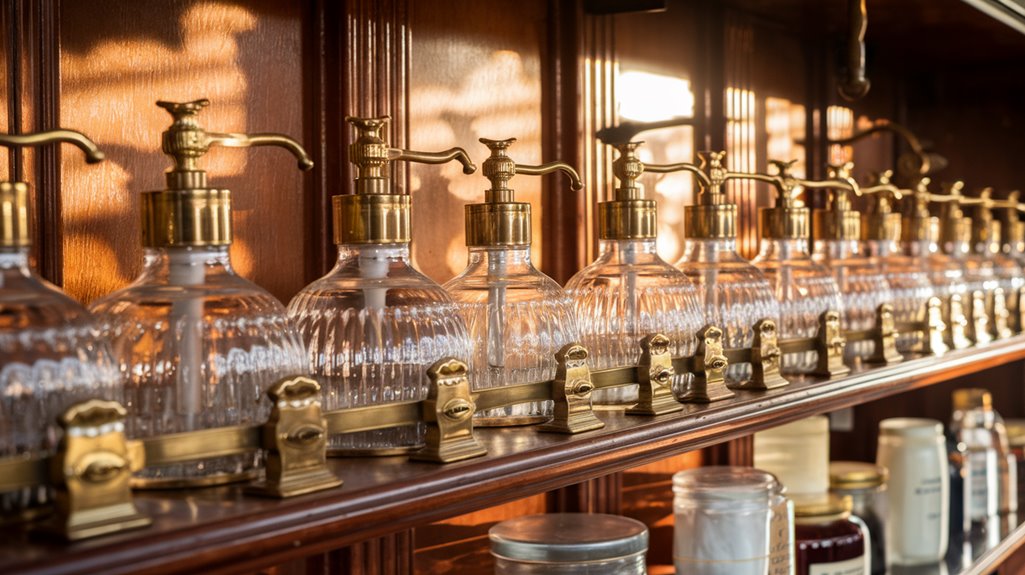
Examining the liquid soap industry's evolution reveals essential business lessons about adaptability and innovation.
You'll notice how successful companies have mastered the delicate balance between consumer behavior trends and efficient supply chain management. With current market projections showing growth from $22.46 billion in 2023, the industry's potential for expansion is clear. Many businesses are finding success through custom scented formulas that allow for personal expression.
Today's market leaders demonstrate three critical strategies:
- They've embraced digital transformation, leveraging e-commerce platforms and smart packaging solutions.
- They're responding to consumer behavior by developing eco-friendly formulations and personalized products.
- They're optimizing supply chain efficiency while maintaining sustainable practices.
These strategies show that success isn't just about controlling resources – it's about anticipating market shifts and consumer needs.
Whether you're developing natural ingredients or implementing innovative dispensing mechanisms, staying ahead requires constant adaptation to changing consumer preferences while maintaining operational excellence in an increasingly competitive landscape.

